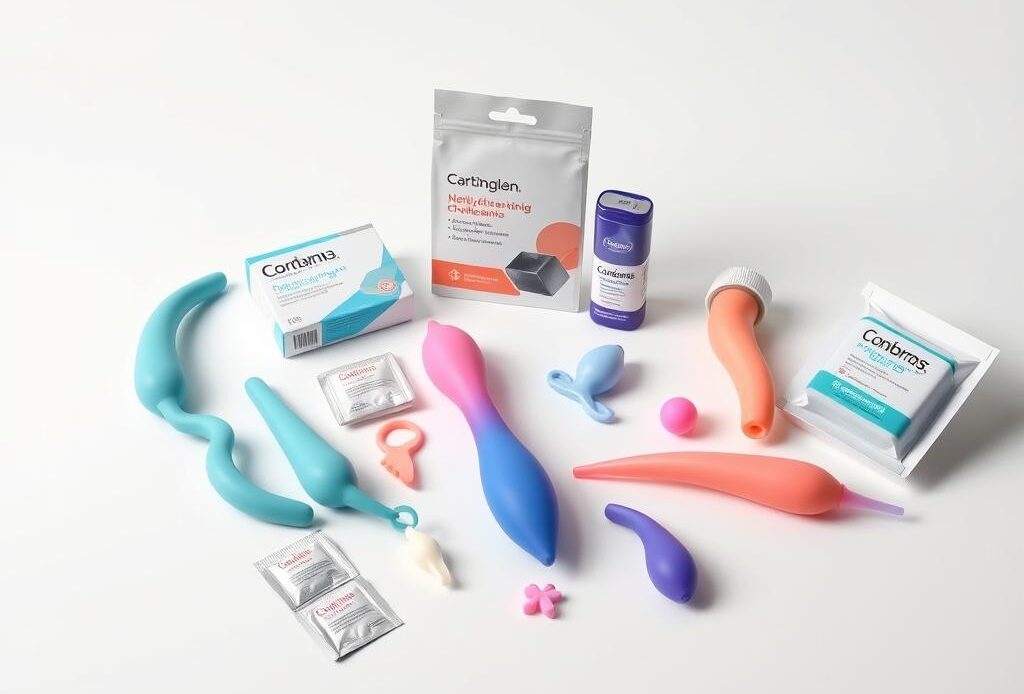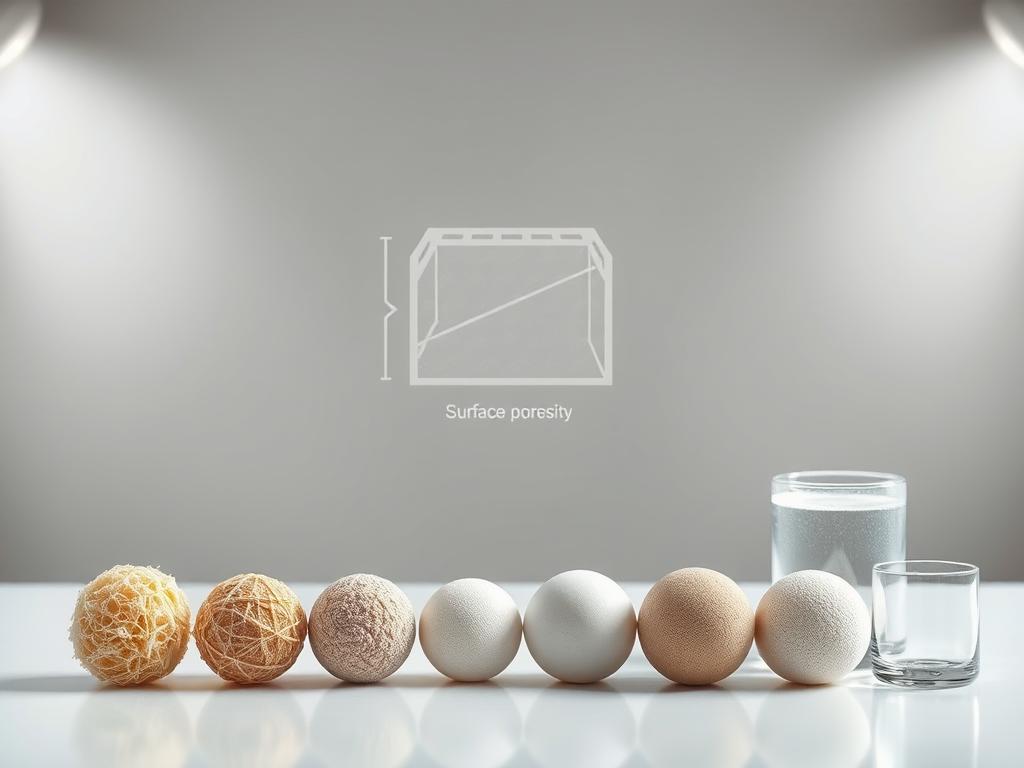
Exploring new ways to enhance intimacy can be exciting, but safety should always come first. While pleasure products offer creative opportunities for connection, improper care may lead to unintended risks. Clinical experts like Megan Stubbs highlight that bodily fluids on shared devices can spread infections if hygiene practices aren’t prioritized.
Real-life cases show how easily bacteria or viruses transfer between partners through these tools. For example, porous materials trap germs even after a quick rinse. This guide will walk you through cleaning techniques, material comparisons, and practical tips to reduce exposure. We’ll also share insights from wellness educators on balancing fun with responsibility.
Our goal? To empower you with knowledge that supports confident choices. Whether you’re new to intimacy aids or a seasoned user, understanding prevention strategies helps protect your well-being. Let’s dive into the essentials of safer play.
Key Takeaways
- Proper cleaning is critical to prevent infections from shared or reused devices.
- Material quality matters—non-porous options like silicone are easier to sanitize.
- Experts recommend avoiding fluid transfer between partners during use.
- Regular inspections for cracks or damage help maintain toy safety.
- Always follow manufacturer guidelines for care and storage.
Introduction and Overview
Balancing fun and precaution ensures worry-free moments with personal gadgets. Our guide exists to help you navigate this balance confidently. Whether you’re exploring solo or partnered play, understanding how to minimize risks keeps the focus on enjoyment.
Purpose and Scope of Our Guide
We’re here to unpack how certain habits, like sharing devices without proper cleaning, can expose users to germs. Research shows that bodily fluids left on surfaces are a primary pathway for infections. This applies whether you’re using shared items occasionally or regularly.
Our scope covers everything from material safety to cleaning routines. You’ll learn why non-porous options reduce risk and how simple steps like barrier methods add protection. We’ve structured this resource to grow with your curiosity.
Our Approach to Addressing Sexual Health
Let’s face it—talking about infections isn’t glamorous. That’s why we focus on solutions rather than fear. Our team collaborates with wellness experts to deliver clear, judgment-free advice.
For example, did you know that sexually transmitted pathogens can survive on surfaces for hours? We’ll share how to interrupt their spread without sacrificing spontaneity. Expect actionable strategies backed by medical guidelines and real-world testing.
Understanding the Risks of STI Transmission
Devices designed for pleasure can unintentionally bridge pathogens between partners when proper precautions aren’t taken. At the heart of this issue lies one key factor: bodily fluids act as vehicles for microbes. Let’s explore how this transfer happens and what it means for your health.
How Bodily Fluids Can Transmit Infections
Fluids like vaginal secretions or semen may carry bacteria and viruses. When these liquids remain on surfaces, pathogens can survive for hours. A 2022 clinical study found that Chlamydia trachomatis stays viable on silicone for up to 24 hours under certain conditions.
Non-porous materials might seem safer, but microscopic crevices can still trap residues. This creates opportunities for indirect contact during shared use. The device itself doesn’t cause infections—it simply moves existing microbes between hosts.
Vectors and Modes of Transmission
Three primary pathways enable this spread:
- Direct fluid exchange during consecutive use
- Surface-to-skin transfer of dormant pathogens
- Cross-contamination through improper storage
Bacterial vaginosis and yeast infections often stem from disrupted pH balances caused by foreign microbes. Viral risks like herpes require more caution since these pathogens remain infectious longer on non-living surfaces.
Understanding these mechanisms helps us develop smarter habits. Simple changes in cleaning routines and usage patterns dramatically reduce transmission risks while preserving spontaneity.
Material Matters: Porous vs. Nonporous Sex Toys
The foundation of safer play starts with understanding what your tools are made of. Different materials behave uniquely when exposed to bodily fluids, impacting hygiene and longevity. Let’s break down why this matters for your health.

Characteristics of Porous Materials
Items made from TPE, jelly rubber, or PVC have microscopic holes that absorb liquids. These porous materials trap moisture and bacteria even after washing. A 2023 clinical review found that 78% of tested porous devices retained pathogens post-cleaning.
Experts like Dr. Alicia Stanton warn: “Once germs settle into these tiny spaces, standard cleaners can’t reach them.” This creates a breeding ground for microbes, especially when sharing between partners.
Benefits of Nonporous Materials
Silicone, glass, and medical-grade plastics form smooth surfaces that repel fluids. Unlike porous options, these materials allow thorough disinfection with boiling water or alcohol wipes. Silicone’s durability makes it a favorite—it withstands repeated sanitization without degrading.
Glass offers similar advantages. Its non-reactive nature prevents chemical interactions, while its slick finish leaves no hiding spots for bacteria. Both options align with CDC guidelines for reducing infection risks during shared use.
When selecting products, prioritize material safety over aesthetics. Nonporous choices might cost more upfront but provide lasting protection. As wellness coach Lena DeFazio notes: “Your body deserves tools that respect its delicate balance.”
Safe Practices for “sex toys and stis”
Prioritizing protection doesn’t mean sacrificing pleasure—it’s about smart choices that keep everyone safe. Simple adjustments to your routine can significantly reduce risks while maintaining spontaneity. Let’s explore two foundational strategies.
Using Barrier Methods Effectively
Slip a condom onto devices before each use. This creates a waterproof shield against fluid exchange. Dr. Jenna Lyons, a sexual health specialist, notes: “Barriers work just as well on gadgets as they do on bodies—they’re your first line of defense.”
Choose unlubricated latex or polyurethane options to avoid material degradation. For partners with latex allergies, silicone-based covers offer safe alternatives. Always remove and replace the condom when switching between users.
Guidelines for Sharing Responsibly
When sharing becomes part of play, follow these safer sex practices:
- Clean devices thoroughly with antibacterial soap before and after each session
- Store items in breathable pouches to prevent microbial growth
- Establish clear verbal consent about usage boundaries
Nonporous materials like medical-grade silicone simplify sanitation. For added security, combine condoms with dedicated cleaning routines. Remember: pathogens can’t negotiate—consistent habits make all the difference.
Open conversations about testing histories and preferences build trust. As one wellness advocate puts it: “Protection starts long before the bedroom—it begins with honest dialogue.”
How to Clean and Maintain Your Sex Toys
Proper maintenance transforms your tools into long-lasting companions for worry-free exploration. Let’s simplify the process with tailored strategies that match your device’s material and design.
Cleaning Techniques for Different Materials
Silicone thrives with warm water and mild soap. Scrub gently, then air-dry completely. For non-motorized items, boiling for 3-5 minutes offers hospital-grade sanitation.
Porous materials demand extra care. Use antibacterial sprays designed for delicate surfaces. Avoid submerging battery compartments—wipe them with alcohol-free wipes instead.
Recommended Cleansing Products
Specialized formulas like Babeland Toy Cleaner break down residues without harsh chemicals. Sliquid Shine adds a pH-balanced shine for sensitive skin. Regular soap works in a pinch but may leave film behind.
After cleansing, pat items dry with lint-free cloths. Store in breathable cotton bags—never plastic cases that trap moisture. These habits keep your collection fresh and functional.
Remember: Consistent cleaning routines protect more than just your investment. They create safer experiences by removing invisible threats before they become problems.
Communication, Consent, and Ethics in Sharing Toys
Open dialogue forms the cornerstone of responsible intimacy practices. When exploring shared experiences, prioritizing transparency builds trust and reduces health risks. Let’s unpack how clear conversations create safer spaces for everyone involved.

Discussing STI Status with Partners
Sharing devices ethically starts with knowing each other’s STI status. We recommend scheduling a relaxed conversation before play begins. Phrases like “Let’s talk about recent tests to keep us both comfortable” normalize health discussions without pressure.
Watch for non-verbal cues too—hesitation or diverted eye contact might signal unspoken concerns. Address these gently: “We can pause anytime if something feels off.” Regular check-ins ensure ongoing consent, especially if symptoms change or new partners enter the dynamic.
Three strategies simplify these talks:
- Frame discussions around mutual care rather than suspicion
- Share testing dates and results openly
- Agree on cleaning protocols beforehand
For those unsure how to start, our guide on how to overcome anxiety about using intimacy offers practical scripts. Remember—every partner deserves clarity. As one therapist notes: “Silence breeds risk; curiosity builds safety.”
Finally, respect boundaries without negotiation. If someone declines sharing, honor that choice immediately. Trust grows when actions align with words.
Addressing Specific STI Concerns with Sex Toys
Navigating infection risks requires understanding how different pathogens behave. Let’s examine bacterial and viral threats, plus unique challenges in certain activities.
Bacterial vs. Viral Infection Risks
Bacteria like those causing gonorrhea can survive on surfaces for hours. A 2023 study found Chlamydia remains active on silicone for 24 hours without proper cleaning. Viral agents like herpes simplex have shorter lifespans outside the body but spread faster through direct contact.
| Pathogen Type | Survival Time | Prevention Strategy |
|---|---|---|
| Bacterial (e.g., BV) | Up to 48 hours | Boiling nonporous devices |
| Viral (e.g., HPV) | 2-6 hours | Barrier methods + alcohol wipes |
Porous materials trap bacteria 3x longer than smooth surfaces. Always check manufacturer guidelines—some cleaners degrade silicone over time.
Special Considerations for Anal Play
This activity introduces fecal matter and delicate tissues prone to micro-tears. Researchers note 40% higher transmission rates here compared to other practices. Three safeguards help:
- Use thick water-based lubricants to reduce friction
- Designate specific devices for anal use only
- Clean immediately with enzyme-based sprays
Flared bases and nonporous designs minimize residue retention. As Dr. Elena Michaels advises: “Assume every anal session requires hospital-level sanitation—because it does.”
The Role of Regular STD Testing and Health Checkups
Taking charge of your well-being means pairing smart habits with reliable health resources. Routine screenings act as a safety net, catching potential issues before they escalate. Let’s explore how staying informed about your status strengthens both personal and shared experiences.
Benefits of Routine Testing
Knowledge is power—especially when it comes to infections. Regular std testing provides clarity, allowing you to address concerns early. Many clinics, including those in Southington, CT, offer same-day results for common screenings.
Consider these advantages:
- Early detection increases treatment success rates
- Peace of mind for you and partners
- Clearer decisions about device sharing
“Regular checks empower individuals to make informed choices,”
Integrating Testing with Safer Practices
Your status directly impacts how you approach intimacy. Those who use sex-related products frequently should test every 3-6 months. Pair this with consistent clean sex toy habits for layered protection.
| Activity Level | Testing Frequency | Key Tests |
|---|---|---|
| Single partner | Annually | Chlamydia, HIV, HPV |
| Multiple partners | Every 90 days | Full panel + hepatitis |
Open conversations about results foster trust. If a person tests positive, pause shared device use until treatment concludes. Remember: Testing isn’t about judgment—it’s about creating safer spaces for everyone involved.
Additional Considerations for Safe and Enjoyable Toy Use
Smart care extends beyond cleaning—it’s about creating lasting habits that protect both users and devices. Maintenance and awareness work together to ensure every experience remains fresh and worry-free. Let’s explore how small adjustments in storage and education amplify safety.
Proper Storage and Handling Tips
Where you keep items matters as much as how you clean them. Dust, heat, and contact with other objects can degrade materials over time. Follow these guidelines:
| Storage Factor | Risk | Solution |
|---|---|---|
| Dust Accumulation | Harbors bacteria | Use breathable cotton bags |
| High Temperatures | Warps silicone | Store in cool, dry spaces |
| Contact With Other Items | Cross-contamination | Separate devices in individual pouches |
Always check manufacturer guidelines for material-specific advice. Products made from body-safe components last longer when stored correctly.
Staying Informed on New Safer Sex Innovations
The wellness industry constantly evolves with smarter designs and cleaning tech. Recent breakthroughs include UV-C sanitizers that disinfect surfaces in 90 seconds and pH-balanced sprays that preserve material integrity.
Subscribe to newsletters from trusted health organizations or follow certified educators online. As Dr. Naomi Torres from the Intimate Wellness Institute notes: “Innovation thrives when users demand both safety and sophistication.”
By combining proper care with ongoing education, we create spaces where pleasure and responsibility coexist effortlessly.
Conclusion
Protecting wellness while enjoying intimacy devices requires intentional habits. Choosing body-safe materials like medical-grade silicone forms the first defense—these nonporous options resist bacterial buildup better than porous alternatives. Always dedicate a few minutes post-use for thorough cleaning with approved disinfectants.
Open dialogue with partners strengthens safety. Discuss testing histories and preferences before sharing devices. Regular screenings paired with proper storage (think breathable bags, not plastic) create layers of protection for your body and others.
Remember: Tools made for pleasure only stay safe through consistent care. Those extra 90 seconds spent sanitizing? They’re your shield against preventable risks. Keep exploring, but let responsibility guide every choice.
We invite you to bookmark this guide and revisit it as needed. Empowerment grows when knowledge meets action—here’s to creating fulfilling experiences that honor everyone’s well-being.
FAQ
Can infections spread through shared pleasure products?
Yes. Bodily fluids or skin contact with contaminated items can transfer bacteria or viruses. Always clean items thoroughly between uses and consider barrier methods like condoms for added protection.
What materials are safest for avoiding contamination?
Nonporous options like medical-grade silicone, glass, or stainless steel resist fluid absorption. Avoid porous materials such as jelly rubber, which can harbor germs even after washing.
How do we clean items properly after each session?
Wash nonporous designs with warm water and mild soap, or use a UV-C sterilizer. For porous items, soak in a 10% bleach solution (if applicable) and dry completely. Check manufacturer guidelines first.
Should partners discuss health status before sharing?
Absolutely. Open conversations about recent STD testing and infection history build trust. Pair these talks with routine screenings to reduce risks during shared play.
Are condoms effective on intimate accessories?
Yes! Covering items with latex or polyurethane barriers prevents fluid exchange. Replace the condom when switching between partners or orifices to block cross-contamination.
How often should we get tested if using shared items?
Schedule screenings every 3–6 months, depending on activity frequency. Combine this with visual checks for unusual discharge, sores, or discomfort to catch issues early.
Does anal play require extra precautions?
Definitely. Bacteria from the rectum can cling to surfaces. Use a dedicated toy for this purpose, apply thick lubricants, and clean immediately post-use to avoid infections.
What storage tips prevent bacterial growth?
Keep items in breathable cotton bags away from humidity. Never stack damp products—dry them fully first. Periodically inspect for cracks or discoloration that could trap germs.

